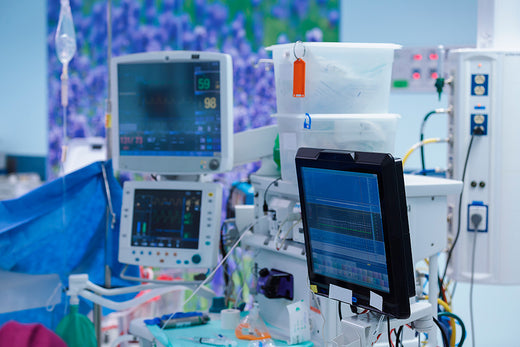The Future of Medical Device Manufacturing

Share
The future of medical device manufacturing is set to change dramatically due to advancements in technology, evolving market needs, and increasing demand for precision. Here’s what the future holds for medical device manufacturers.
-
Additive Manufacturing (3D Printing)
3D printing technology is revolutionizing the manufacturing process for medical devices. It allows for rapid prototyping, the creation of custom devices, and the ability to produce complex parts with high precision. According to TechCrunch, the medical 3D printing market is projected to grow at a CAGR of 17.5% through 2025. Manufacturers are increasingly using 3D printing to produce prosthetics, implants, and custom surgical tools. -
Automation and Robotics
Automation and robotics are becoming increasingly integral in medical device manufacturing. These technologies help streamline production, reduce human error, and ensure the highest standards of quality. Automated systems in assembly lines are capable of performing tasks faster and with greater precision than manual labor, significantly improving productivity and reducing costs. In MedTech, robotic-assisted manufacturing is also used to create highly complex devices that require extreme accuracy. -
Sustainability and Eco-Friendly Practices
The medical device industry is increasingly focusing on sustainability. Manufacturers are moving toward eco-friendly materials, reducing waste, and exploring ways to lower their carbon footprint. Lean manufacturing practices, which aim to reduce excess and improve efficiency, are becoming standard practice. Companies are also beginning to use recycled materials in production, ensuring that their manufacturing processes align with modern sustainability standards. -
The Digitalization of Manufacturing
The digitalization of manufacturing, often referred to as Industry 4.0, involves the use of IoT devices, artificial intelligence (AI), and data analytics to optimize manufacturing processes. These technologies allow manufacturers to track the performance of equipment in real-time, anticipate maintenance needs, and improve the overall efficiency of production. The integration of digital tools into manufacturing processes also leads to greater customization and more personalized devices. -
Challenges and Innovations
While these advancements present exciting opportunities, they also come with challenges. Regulatory bodies are adapting to new manufacturing technologies, ensuring that products meet safety standards while allowing for innovation. Manufacturers must stay ahead of these changes to ensure that they comply with regulations without hindering innovation.
The future of medical device manufacturing is set to be shaped by rapid technological innovation and increased emphasis on sustainability and efficiency. For professionals entering the field, staying up to date with these trends is crucial to success.
Sources:
Onward and upward,
Anatomy of MedTech Authors

